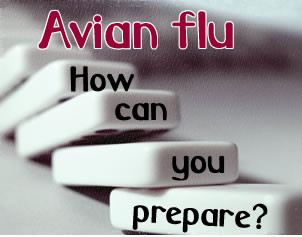 To help employees prepare for a potential pandemic, UNMC Today is publishing educational information on avian flu — the most likely candidate — and ways to prepare for such an outbreak. The features will appear each Tuesday. Today, we’ll explain the difference between seasonal and pandemic flu.
To help employees prepare for a potential pandemic, UNMC Today is publishing educational information on avian flu — the most likely candidate — and ways to prepare for such an outbreak. The features will appear each Tuesday. Today, we’ll explain the difference between seasonal and pandemic flu.
Seasonal vs. pandemic flu
Pandemic flu is not the same as seasonal flu. Here’s the difference:
Seasonal (or common) flu is a respiratory illness that can be transmitted person to person. Seasonal flu:
- Occurs every year during the winter.
- Affects 5 percent to 20 percent of the population.
- Most people have some immunity.
- For most people it is unpleasant but not life-threatening.
- People who are very young, very old, and/or have certain chronic illnesses are most at risk of serious illness.
- A vaccine is usually available.
- Antiviral drugs help treat those at risk and those who are sick.
Pandemic flu is virulent human flu that causes a global outbreak, or pandemic, of serious illness. Pandemic flu:
- Can occur any time of the year. Has occurred three times in the last 90 years.
- May affect 30 percent or more of the population.
- Can spread easily from person to person.
- People have little or no natural immunity.
- Is often life-threatening.
- Everyone could be at risk of serious illness.
- A vaccine is currently not available.
- Antiviral drugs are likely to be in limited supply during a pandemic.
Avian flu
World health officials are focusing on avian (or bird) flu as the next potential pandemic. Avian flu is caused by influenza viruses that occur naturally among wild birds. The H5N1 variant is deadly to domestic fowl and can be transmitted from birds to humans. There is no human immunity and no vaccine is available.
Sources: Nebraska Health and Human Services brochure and U.S. Department of Health & Human Services Web site.